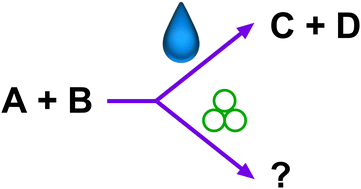Synthesis without solvent: consequences for mechanochemical reactivity
Abstract
Solvents are so nearly omnipresent in synthetic chemistry that a classic question for their use has been: “What is the best solvent for this reaction?” The increasing use of mechanochemical approaches to synthesis—by grinding, milling, extrusion, or other means—and usually with no, or only limited, amounts of solvent, has raised an alternative question for the synthetic chemist: “What happens if there is no solvent?” This review focuses on a three-part answer to that question: when there is little change (“solvent-optional” reactions); when solvent needs to be present in some form, even if only in the amounts provided by liquid-assisted (LAG) or solvate-assisted grinding; and those cases in which mechanochemistry allows access to compounds that cannot be obtained from solution-based routes. The emphasis here is on inorganic and organometallic systems, including selected examples of mechanosynthesis and mechanocatalysis. Issues of mechanochemical depictions and the adequacy of LAG descriptions are also reviewed.

- This article is part of the themed collection: Chemical Communications HOT Articles 2023


 Please wait while we load your content...
Please wait while we load your content...